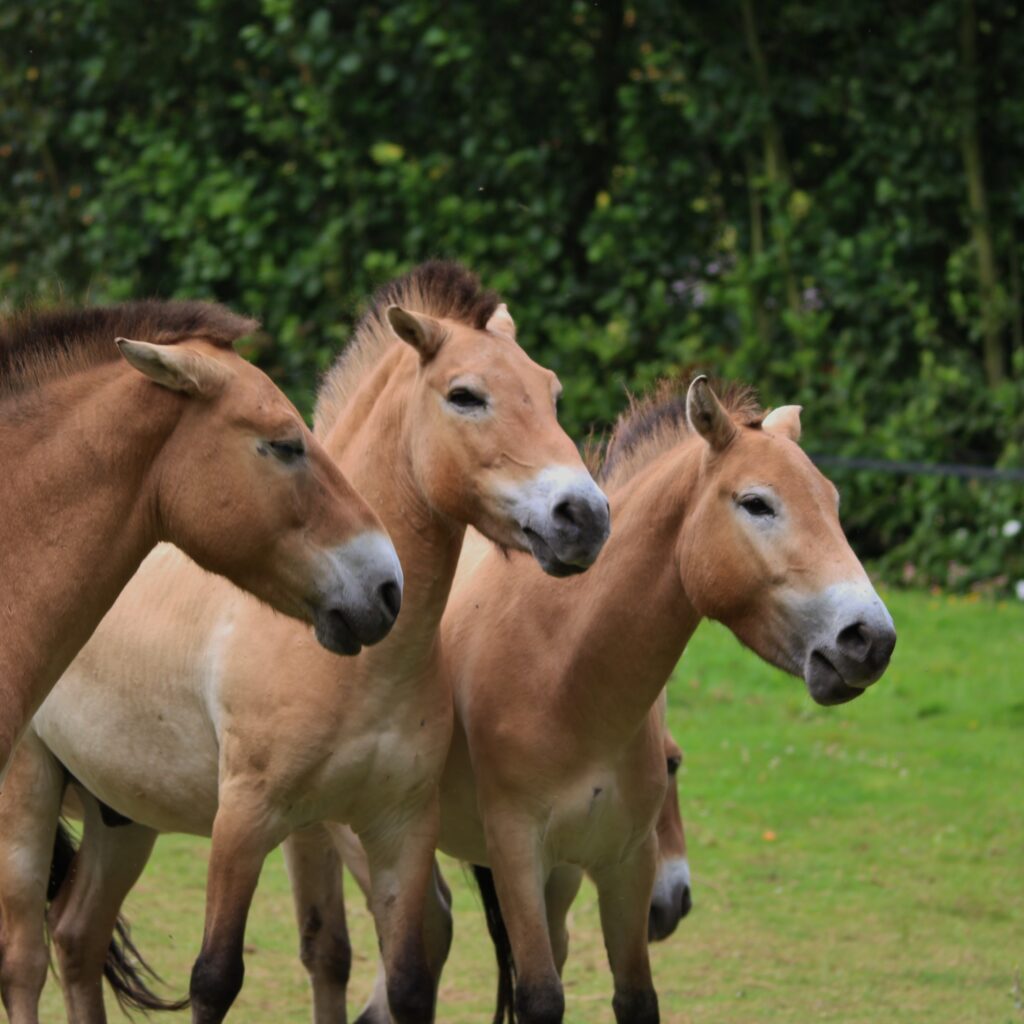
Przewalski' horse
Class: Mammals
Order: Perissodactyla
Family: Equidae
Genus: Equus
Species: Ferus
Subspecies: Przewalskii
Geographic distribution: Mongolia
Habitat: Open plains and semi-deserts
Height: 120 to 135 cm at the withers
Longevity: 25 years
Weight: 250 to 350 kg
Sexual maturity: 2 years
Gestation: 11 months
Litter: 1 pup
Diet: Herbivore, grass, plants, fruits, bark, buds, etc.
Protection status: IUCN CR status – Endangered
Description
The Przewalski’s horse lives in small family groups consisting of a stallion, a few mares, and their offspring. This sturdy equine is a direct descendant of the horses depicted on the walls of prehistoric caves in Europe, dating back between 30,000 and 9,000 years BCE. Despite their genetic proximity to domestic horses, with whom they share a common ancestor, Przewalski’s horses have a unique distinction: they possess 66 chromosomes, compared to 64 in their domesticated counterparts.
Threats and preservation
Discovered in 1879 by Russian explorer Nikolaï Przewalski, the Przewalski’s horse disappeared from the wild by the late 1960s due to hunting, captures and competition with domestic species. Captures in the early 20th century enabled the species to be saved through international breeding programs. Today, over 1,500 horses live in zoos and reserves, and since the 1990s, reintroduction efforts in Mongolia have allowed more than 300 horses to return to the steppes.